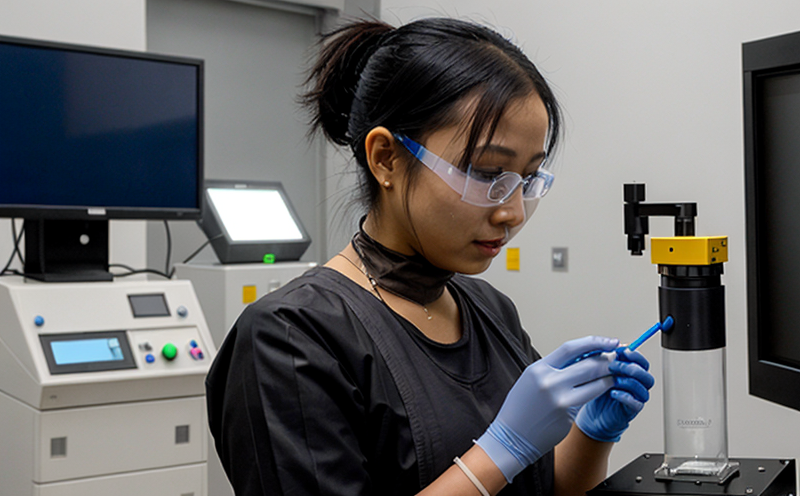ASTM E2456 Terminology for Environmental Nanomaterial Testing
The ASTM E2456 standard provides a comprehensive vocabulary for environmental nanomaterial testing, which is critical for the proper characterization and understanding of nanomaterials in environmental contexts. This terminology is essential for ensuring consistent communication among researchers, regulatory bodies, and industry professionals working with nanomaterials.
Environmental nanomaterials are widely used in various sectors including water treatment, agriculture, and cosmetics. The unique properties of these materials can lead to both beneficial effects and potential risks when they interact with the environment. Accurate terminology is vital for assessing their environmental impact accurately.
The ASTM E2456 standard defines key terms such as nanomaterial, nanoparticle, agglomerate, and dissolution rate. These definitions are crucial because they help in understanding how nanomaterials behave under different conditions and environments. For instance, the term "dissolution rate" is important for assessing whether a nanomaterial will break down rapidly or slowly once released into an environmental medium.
The standard also covers test methods related to environmental exposure scenarios. This includes leaching tests that simulate how nanomaterials might behave in soil and water systems, as well as particle size distribution analyses which are essential for understanding the dispersion of these materials within natural ecosystems.
Understanding these terms helps quality managers, compliance officers, R&D engineers, and procurement teams make informed decisions about their products. It ensures that all parties involved in nanomaterial development or application understand what constitutes a "nanoparticle" versus an "agglomerate," allowing for more precise regulatory filings and safer product design.
The ASTM E2456 terminology is widely recognized by international standards organizations like ISO, EN, IEC, etc., making it a global benchmark. Compliance with this standard can significantly reduce risks associated with non-compliance penalties or market exclusions due to miscommunication about nanomaterial properties during regulatory reviews.
In summary, mastering the ASTM E2456 terminology is key for anyone working in sectors involving environmental nanomaterials testing. By adopting these standardized terms, professionals ensure accurate communication across disciplines and facilitate better decision-making processes regarding product development and safety assessments.
Benefits
- Avoids confusion caused by inconsistent terminology used in nanomaterial testing.
- Facilitates clearer communication among stakeholders involved in environmental nanomaterial research and regulation.
- Ensures regulatory compliance which can reduce the risk of legal issues or market exclusion.
- Promotes safer product design by providing precise definitions for various aspects of nanomaterial behavior under different conditions.
- Facilitates more accurate assessment of potential environmental impacts through consistent terminology related to exposure scenarios and test methods.
EuroLab Advantages in ASTM E2456 Testing
EuroLab offers unparalleled expertise in conducting ASTM E2456 compliant testing for environmental nanomaterials. Our team of highly qualified professionals is well-versed in the intricacies of this standard, ensuring that all tests are conducted according to its stringent requirements.
We utilize state-of-the-art equipment and facilities specifically designed to handle sensitive samples like nanomaterials. This allows us to provide accurate measurements and analyses even for very small quantities of material. Our laboratories adhere strictly to ISO/IEC 17025 accreditation, guaranteeing the highest level of quality assurance.
Our services encompass a wide range of testing capabilities including particle size analysis, leaching studies, dissolution rate determinations, and more. Each test is tailored specifically for your needs, whether you require basic compliance checks or complex research support.
At EuroLab, we understand that time-to-market is crucial in competitive industries. That's why our turnaround times are typically faster than industry averages without compromising on accuracy or reliability. Our commitment to excellence ensures that clients receive their results quickly so they can make timely decisions based on the latest data available.
Use Cases and Application Examples
| Use Case | Description |
|---|---|
| Determining Leaching Rates of Nanoparticles in Soil | This involves simulating real-world conditions to see how quickly nanoparticles might move through soil. This information is crucial for assessing long-term environmental impacts. |
| Measuring Particle Size Distribution in Water Samples | Particles smaller than 100 nm can have significant biological effects, so it's important to measure their distribution accurately. This helps in understanding dispersion patterns within aquatic environments. |
| Evaluating Dissolution Rates of Nanomaterials in Various Media | Dissolving rates affect how quickly nanomaterials become available for environmental interaction. Different media (water, soil) may have varying dissolution characteristics which need to be evaluated separately. |
| Assessing Agglomeration Behavior Under Different Conditions | Nanoparticles tend to agglomerate over time due to factors like temperature and pH changes. Understanding this behavior helps predict stability issues in formulated products containing nanomaterials. |
These use cases highlight the importance of accurate terminology provided by ASTM E2456 when conducting environmental nanomaterial testing. They also demonstrate why compliance with these standards is essential for ensuring reliable results and valid conclusions about nanoparticle behavior in diverse environments.





